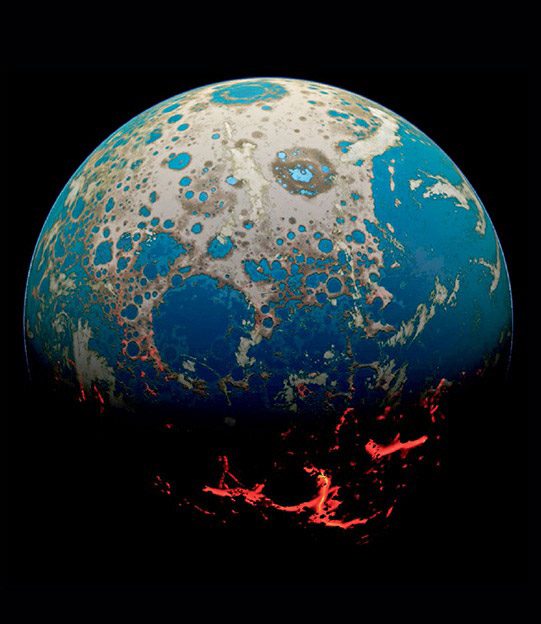During the tumultuous Hadean eon, approximately 4.5 to 4 billion years ago, Earth witnessed massive volcanic eruptions, spewing molten lava and a plethora of gases including hydrogen, ammonia, methane, carbon dioxide (CO2), sulfur dioxide (SO2), and water vapor. This formed Earth’s initial steamy atmosphere. As Earth entered the Archean eon around 4 billion years ago and cooled down, conditions became favorable for water to exist as a liquid on the surface, leading to the birth of Earth’s oceans.
The origin of these volatile gases, and consequently the water, is a topic of ongoing scientific inquiry. One theory suggests that comets and asteroids, which were instrumental in Earth’s formation, contained water that gradually released through Hadean volcanism. Another theory posits a “late veneer” of water delivered by a steady bombardment of comets and asteroids, which condensed to form the oceans. Both theories have supporting evidence: active volcanoes today release significant amounts of water and other gases, and meteorite studies show that some space rocks are rich in water.
In Earth’s early oceans, CO2 and ammonia dissolved rapidly, turning the oceans into a sink for these gases and effectively removing them from the atmosphere. This process likely resulted in an Archean atmosphere rich in hydrogen and methane, with scant free oxygen – similar to the atmosphere of Saturn’s moon Titan. This type of atmosphere is known as a reducing atmosphere, in contrast to an oxidizing one. Experiments dating back to the 1950s have demonstrated that when such an atmosphere interacts with liquid water and is subjected to energy sources like lightning or solar UV radiation, a variety of organic molecules can form. These molecules include simple amino acids, the building blocks of life, suggesting a profound connection between Earth’s early atmospheric and oceanic conditions and the origin of life.

